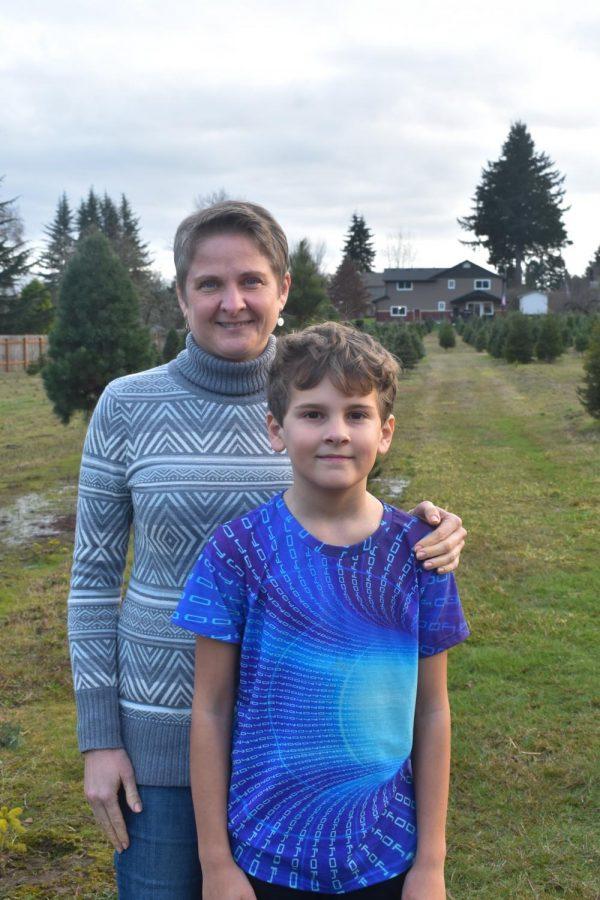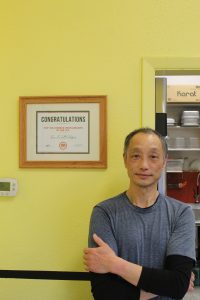- Beavers Digest
- Beavers Digest / Culture
- Beavers Digest / Culture / Community
- Beavers Digest / Experience
- Beavers Digest / Experience / Campus
- Beavers Digest / Experience / Wellness
- Beavers Digest / Magazine
The Pandemic Through the Eyes of OSU Parents
February 16, 2021
If there’s one thing we’ve learned during the COVID-19 pandemic it’s this: everyone is experiencing it differently. Yes, we all have to wear masks in the grocery store, carry hand sanitizer and have become masters at all things zoom. But, what if while acclimating to this new way of life, you were also caring for a child?
For many Oregon State University students, faculty and staff, the acclimation is still ongoing. I spoke to a variety of different parents to see what aspects of parenting during quarantine they’ve mastered, and what parts of a remote lifestyle still find themselves working through every day.
Like many parents, Olga Loza, salesforce developer and analyst programmer for OSU E-Campus, said she found the initial transition to remote schooling for her nine-year-old son the first and most important issue her family had to tackle last spring.
“My husband made him a desk that he uses for school in the living room, and I get the office and there’s a door in between, so that helps,” Loza said. “Also, my work pays for noise cancelling headphones which I’m late to the party for… I’m actually able to really block out all of the kids in his zoom and focus on my own zoom really well. We don’t interfere with each other.”
Loza’s son is currently a third grader at Adams Elementary and has worked remotely since the pandemic began last spring. She explains the transition period as “chaotic” but was grateful for the summer off in order to recuperate and set a steady game plan for the upcoming school year.
Now, he is able to handle the difficulties of online schooling, and even likes the remote methods of learning more than in-person activities.
“I would be fine staying at home this whole year because I also realize how hard it would be for [teachers] to teach a classroom where 10 kids are in person and 10 kids are on zoom,” Loza said. “They’ve figured out a system now, and it’s working and all of the sudden for the last two, three months they’re going to have to reconfigure the system, and I just don’t see that working.”
PhD student, graduate instructor and mother, Terese Jones, feels the same. Although her 10 year-old-son does not necessarily thrive in remote learning, he has acclimated well enough so that when it comes to sending him back to school, she’d rather give the opportunity to other students in need.
“When I think about equity, and who is going to need those spots in the class and what’s our responsibility as a community to create the safest possible school-based learning environment that we can, I think my son is not someone who should occupy one of those seats because his learning needs are able to be met in our home,” said Jones.
Jones described several moments over the past year in which she was able to bond with her son over their shared interest in a subject he was learning, and the ways in which she used alternative methods to help her son better understand his class material.
“Counting baking cookies as math class some days because you need him to do some math and a worksheet is not going to happen, so ‘You measure everything, you add it up [and] to make it harder we’ll double the recipe’” Jones recalls telling her son. “I’m calling [that] a win for the day.”
But, for parents in large households, their kids returning to school may be the only opportunity for normalcy again.
As a single mother of six and communications student at OSU, Kelly Skaer’s outlook on the past year has and will continue to be a struggle of trying to constantly stay positive.
“[The pandemic] has taken more than it’s given,” Skaer said. “Maybe if I had a provider, a husband, or two adults in the family, I would feel more supported but I’m not.”
With Skaer’s oldest son in high school and youngest daughter in pre-school, there is a constant bustle of zoom conferencing happening within her home throughout the day.
In the midst, Skaer has continued to juggle coursework and working two part-time jobs. While her job requirements as a court transcriber are assignment-based and not hourly, Skaer’s days start before the rest of her family’s does or ends hours after they’ve gone to bed for the night.
“It means sacrificing sleep, which means I’m more on edge and then the kids are more on edge and then it’s just a vicious circle where we’re kind of deprived of having a balance right now,” Skaer said. “It’s like my whole world has changed and I’m told to just make stuff happen. One adult, six kids, as a student and pay the bills? That’s crazy.”
Due to COVID-19, Skaer’s opportunity for job assignments dwindled, leading her to get another job to make ends meet. As of now, the second job has provided the extra support that Skaer and her family needed, but doesn’t necessarily make things easier on her as a student.
“I think of [my situation] as a browser with 10 tabs open when I’m doing school at home,” Skaer said. “Yes I’m trying to do school at home, but I also have to be aware of all these children [that] I’m immediately in charge of. I don’t get to just put my student hat on.”
On the other side of the spectrum, professors and faculty with children are experiencing their own set of obstacles.
Prior to the shutdown of OSU’s main campus, Mark Clements was working as both a part-time instructor in the College of Business and a manager for OSU’s software development and quality assurance department. His wife lost her part-time job working at a flower shop around the same time that Clements was laid off from his duties as an instructor, and since then has stayed home with their six children.
“Most of my work can be done remotely… however, at my house, I don’t have a dedicated office that’s secluded, so I was kind of working out of my bedroom which of course, right outside the door is where my children are doing their school on zoom,” Clements said. “It was just this mess trying to keep work and school with that many people all in the same household.”
Clements was able to file for an exception to work on campus in order to get his work done efficiently. He looks forward to a time when he is able to return back to work as an instructor and connect with students in a way that is not through the screen. Until then, he finds some comfort in the familiarity of working on the OSU campus.
As far as a silver lining goes, there seems to be a consensus all around.
“I’ve been saying for years that the school gets the time with my son and I don’t,” Loza said. “I only [used to] see him in the evening for a couple of hours before bedtime. All of the sudden, everything changed and, I don’t know, we’re really close now. We even have inside jokes.”
Whereas the traditional college student might be looking forward to the time when study abroad is available again or football games reopen to the public, these families are enjoying the uniqueness within the lockdown and might even remember this era with fondness.
“I don’t know a better time in my son’s life when we can have to be holed up in a space together than right now where he is able, so able, to do so many things on his own but still so willing to need us,” Jones said. “I feel very fortunate that I get, almost, this extra year of time with him.”






